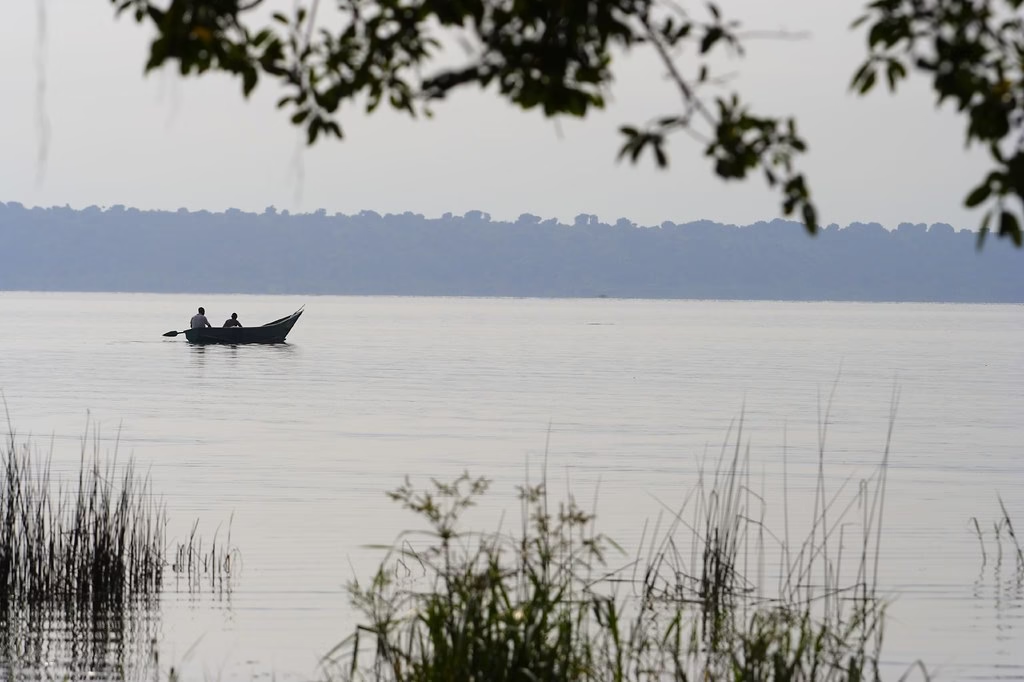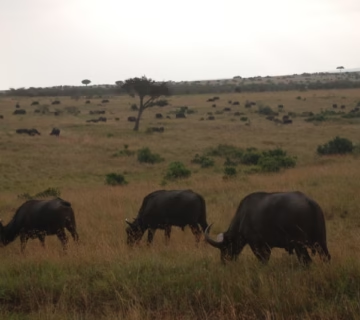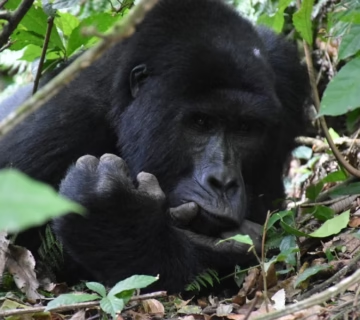Katwe Craters on Lake Katwe
Lake Katwe Explosion Cratchers
Around Queen Elizabeth national park are explosion crater lakes discovered in Uganda. Elephants, buffaloes, flamingos and baboons can be seen at the Baboon Cliff; the main Crater Lake is “Lake Katwe; the number one salt distributor in Uganda; lake is 3,265 feet depth not able to habituate any animals because of salty water.”
These ancient lakes are believable.
Around Queen Elizabeth national park are lake Katwe Explosion craters in Uganda. Elephants, buffaloes, flamingoes and baboons can be seen at the baboon cliff; they are in the northern section of the Mweya peninsula. The main Crater Lake is “Lake Katwe; the number one salt distributor in Uganda; lake depth is 3,265 feet; unable to habitat any animals due of salted water.”
The trip through the craters in Queen Elizabeth National Park is just 27 kilometers. You will see some creatures along the road, including lonely male buffaloes and elephants; the loser buffaloes.
Above Mweya peninsular are the Katwe Craters. Within Queen Elizabeth national park in Western Uganda, they are the highest points. During the journey, you may observe Africa’s enormous western rift valley and the escarpments. Along with a chance of Mountain Rwenzori ranges and Kazinga Channel linking Lake Edward to Lake George, you will also see Lake George.
Many western Uganda volcanoes where strong leading to the construction of the explosive craters spot western Uganda; Bushenyi district, Kasese and Fort Portal. Although some still emit sulfurous gas smells, the Katwe craters are considered extinct.
Hiking in Queen Elizabeth National Park on the western side of Uganda, Katwe explosive craters offer quite lovely vistas. Missing the Kitagata Lake fed by the saltwater hot springs would not be anything you would want. Though quite gorgeous to see and trek around, this lake lacks wild life.
Your trekking trip in Queen Elizabeth national park will be enhanced by the Katwe Explosion Craters. What a wonderful alchemy this creates! “Top of the world” trip near Fort Portal will lead you to other crater lakes through the communities and across tea farms.
You will also have an opportunity to tour the long-ago salt mills at Lake Katwe. Here you will learn how during the dry season super/hyper concentrated saline water forms salt. Although the living of the inhabitants in Katwe village depends on salt mining, which is true, you will find out how hard this kind of work is for it can create sexual difficulties to the miners. Purchasing crafts from the community will thus help you to show some support for them.
One of the folk tales from western Uganda is the crater at Fort Portal; known as the “kasesankarange,” which means the thrower of roasted debris from the mouth or stomach; vomit. You would not want to miss the narrative as told by the residents of the area.
Along with tropical birds and the striking flamingo migratory birds at Queen Elizabeth National Park, you will come across wild animals including monkeys, baboons at Nyamunuka Crater Lake, throughout the walks. They supposedly go from Europe in the winter and arrive to find warmth in western Uganda. You will notice them bedding on the shores of Kitagata salty (no life nearby), it is good if you of all the places they choose to stay near to salty crater lakes.
Included among the other crater lakes are Bunyaruguru Crater Fields. These fall on the western rift valley’s Kichwamba escarpment. For instance, this area boasts 20 additional craters and Lake Nkugute, which you can see from Mbarara- Kasese route. Imagine how speckled the west looks with crater!
Not far from Fort Portal-Kibale Forest lies Ndali- Kasenda Crater Fields another crater field. Unlike in the national park, Queen Elizabeth National Park. One explores the craters here on foot. Here is the top of the globe climb; you will see the mountains of the moon, pass through tea farms, Kibale Rain Forest, Lake Goerge, Kichwamba escarpment of the western rift valley.
The smallest fort gateway crater fields found west of Uganda. Among their lakes are Lake Kyaninga. Actually a little distance hiking from the crater to thee lodge, if you happen to have some money to save you can lodge in the up-market Kyaninga Lodge overlooking Crater Lake.
Your concerns should not be accommodation; queen Elizabeth national park is dotted with plenty of facilities.
Kyaninga Logde Ndali Lodge CVK Lodge
These are the closest to the craters; among others, you could also lodge in Mweya Hostels, Mweya Safari Gorge Lodge, Park View Lodge, Katwe Camp.
When you visit Queen Elizabeth national park, Bwindi Forests, Kibale National Park, surely the Katwe Craters should be on your must do list. At least let the breathtaking surroundings draw you to participate in this activity.
Thought to have developed from strong volcanic eruptions; these explosions were so forceful that rather of accumulating waste near their vents, they extensively distributed ash to the remote regions.
These days, they are known as crater lakes; some of them still emit unique scents. Kyemengo the most magnificent; The Ndali Kasenda crater, Bunyaraguru on the Kichambwa escarpment; A few years before Christ, this crater explosion lake was erupting brimstone and flowing volcanic fire.
Their lack of water discharges results in the salinity of the water.
The 27kilometer journey around the crater lakes shows much of wildlife, including elephants, monkeys, and many bird species; the huge western arm African rift valley with its massive escarpments is well visible from here.
The crater lakes like Kasesankarange in Fort Portal meaning spewer of roasted goods still speak to the people of western Uganda in their local villages. The three main lakes mentioned above are not the only crater lakes found there; others are present in the area with over 20 crater lakes, some of which still contain molten lava and are likely to explode in years to come probably not when your on safari just enjoy the amazing views for time being.
One can reach this lake on foot from the fort portal location near Kibale forest. Among the walks one can do here are “on top of the world” ones with panoramic views of the right valley escarpments and moon mountains among others. You can also include a nature guided trip to the kibale forest on your schedule. Tours can last half a day or a whole day. One can also find accommodation units around here.
Various bird species, including lesser plus flamingos, also draw this explosion crater lakes.
Apart from explosion crater lakes in Queen Elizabeth National Park, the park has a lot to offer starting from the impressive views of this crater lakes to the fresh water body lakes George and Edward not forgetting the stunning Kazinga channel with it’s numerous hippos, crocodiles and views of elephants in the afternoon with the overlying views of the ishasha and Kasenyi plains over looking the mountains of the moon and Kasese town and fishing villages.
Not forgetting to visit the Lake Katwe fishing village and see people’s way of life and lean how salt is mines though the mining processes haven’t changed in the recent years one can also add a chimpanzee trekking trip to their travel list and view chimpanzees at the great kyambo “the valley of apes.” Visiting this explosive crater lake offers a full day itinerary and a singular experience of the volcanic eruptions.



